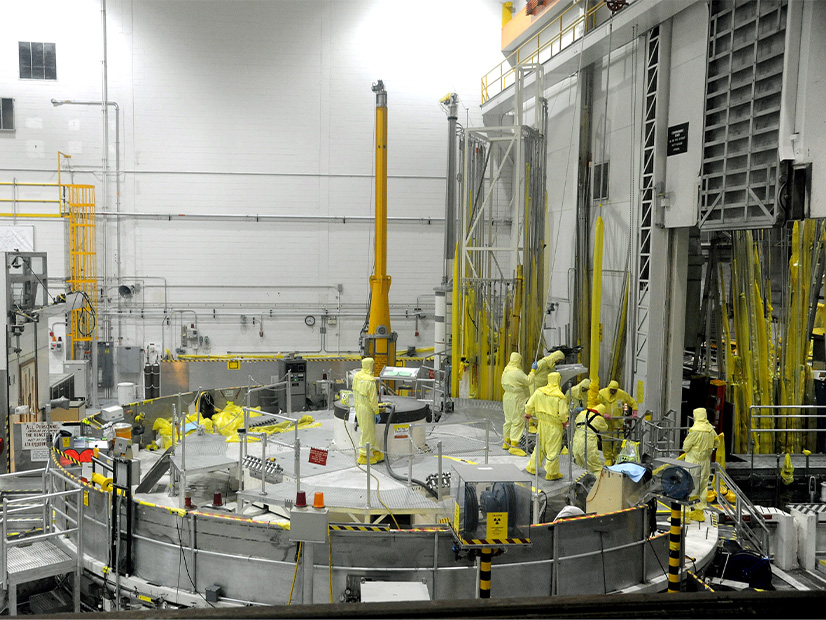
The U.S. Nuclear Regulatory Commission has moved to ease some of the crisis requirements for small modular reactors, potentially eliminating the emergency preparedness zones currently required near most nuclear reactors.
The long-running process (Docket NRC-2015-0225) was approved Monday by the four sitting commissioners.
The final rule — “Emergency Preparedness for Small Modular Reactors and Other New Technologies” — next goes to the Office of Management and Budget for review and subsequent publication in the Federal Register.
It will take effect 30 days after publication, which NRC staff estimates will be somewhere between mid-November and mid-January.
NRC will simultaneously issue “Performance-Based Emergency Preparedness for Small Modular Reactors, Non-Light-Water Reactors and Non-Power Production or Utilization Facilities.”
NRC said in a news release that the rule’s framework is based on technology and consequences.
Specifically, the technology in the new generation of SMRs is expected to be improved from the older reactors in use across the nation. And the consequences of an accident with a small reactor are potentially less severe than with a large reactor.
The rule gives applicants a scalable method to determine the size of the emergency planning zone surrounding their proposed facility — or to not even create such a zone — and develop a performance-based emergency preparedness program rather than the off-site radiological emergency planning requirements now in effect.
The new rule excludes fuel cycle facilities; currently operating research and test reactors; and large light-water reactors —those licensed to produce greater than 1 GW of thermal power.
Advanced SMRs are viewed as a potentially significant part of the clean energy transition, providing the emissions-free benefits of wind and solar generation with a much more stable power output, not reliant on variable wind or sunshine.
But to achieve widespread adoption, SMR technology will need to be perfected and be economical.
To achieve widespread acceptance, SMRs will need to win over people concerned that commercial nuclear fission carries health and safety risks.
Along these lines, the Union of Concerned Scientists criticized the NRC vote later Monday.
“Past natural and human-made disasters have taught us that having a robust and workable emergency plan in place is the key to minimizing human suffering and loss of life if the unthinkable happens. The NRC’s reckless decision today flies in the face of that experience,” said Edwin Lyman, director of nuclear power safety at the organization.
Stakeholders, the public and other government agencies submitted numerous comments in favor of and against the proposed rule as it was being finalized, and some NRC commissioners echoed some of the concerns in their own comments leading up to Monday’s vote. All four voted to approve, though Bradley Crowell registered disapproval of some aspects.
He commented: “We should recognize the collective lack of operating experience with these new technologies” and strike a better balance between easing their commercialization and adequately preparing for emergencies that involve them.
Commenters including the Federal Emergency Management Agency raised the same concern, Crowell said, adding: “I do not believe the draft final rule adequately reflects the concerns from these key stakeholders.”
He also said the frequency of emergency preparedness drills should be specified, given that the jurisdictions hosting SMRs may have no experiences with radiological emergencies.
Jeffrey Baran’s term on the commission recently ended, but not before he submitted comments.
Like Crowell, he raised concerns about emergency planning zones not extending beyond the gates of a reactor facility:
“Unlike a 5-mile or even 2-mile EPZ, a site boundary EPZ would not require dedicated offsite radiological emergency planning, and FEMA would have no role in evaluating the adequacy of a site’s emergency plans. With a site boundary EPZ, emergency responders would be left with all-hazards planning. While the NRC staff believes that all-hazards planning would be sufficient, FEMA and state emergency response agencies are not convinced.”
NRC Chair Christopher Hanson wrote that proposed rules do not preclude the emergency preparedness measures some commenters sought.
But it makes sense to have a flexible approach to SMR safety regulations, he said, because while SMRs are likely to be greatly variable in design and risk factor, they will have smaller reactor core, lower radionuclide inventories and smaller/slower fission product releases in the event of an accident — all of which would reduce risk to surrounding areas.
Hanson said NRC must be careful not to overstep its regulatory powers, but state and local entities can choose to implement safety plans of their own, and other federal agencies can support them.
Commissioner David Wright wrote: “Even if a determination is made that a formal offsite EP program is not required, the rule still requires that licensees maintain emergency plans that establish contacts, arrangements and procedures for coordination with offsite response organizations.”
Commissioner Annie Caputo said the rule is in line with congressional direction in the Nuclear Energy Innovation and Modernization Act, and will ensure decisions are objective, unbiased, scientific and protective of public health and safety.


